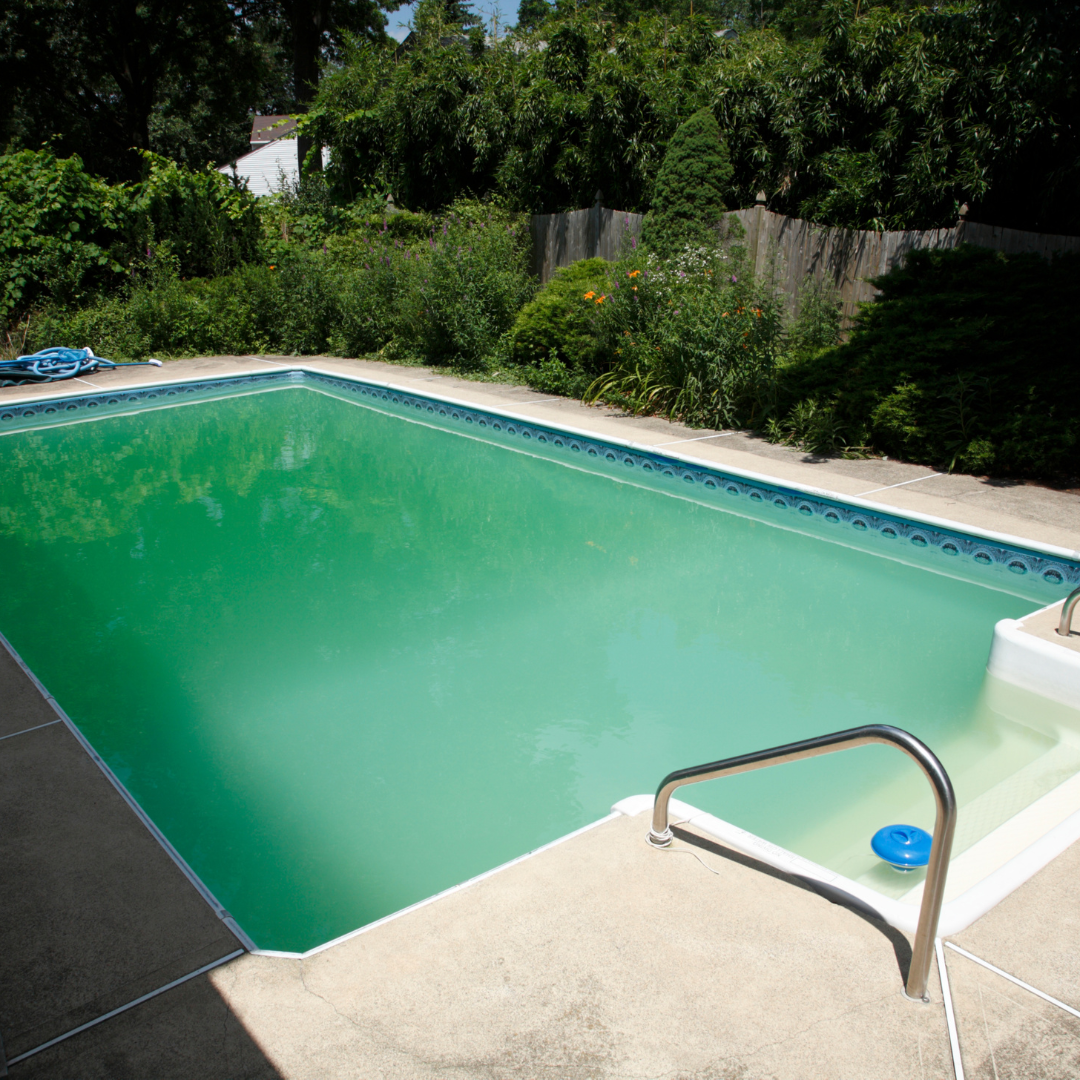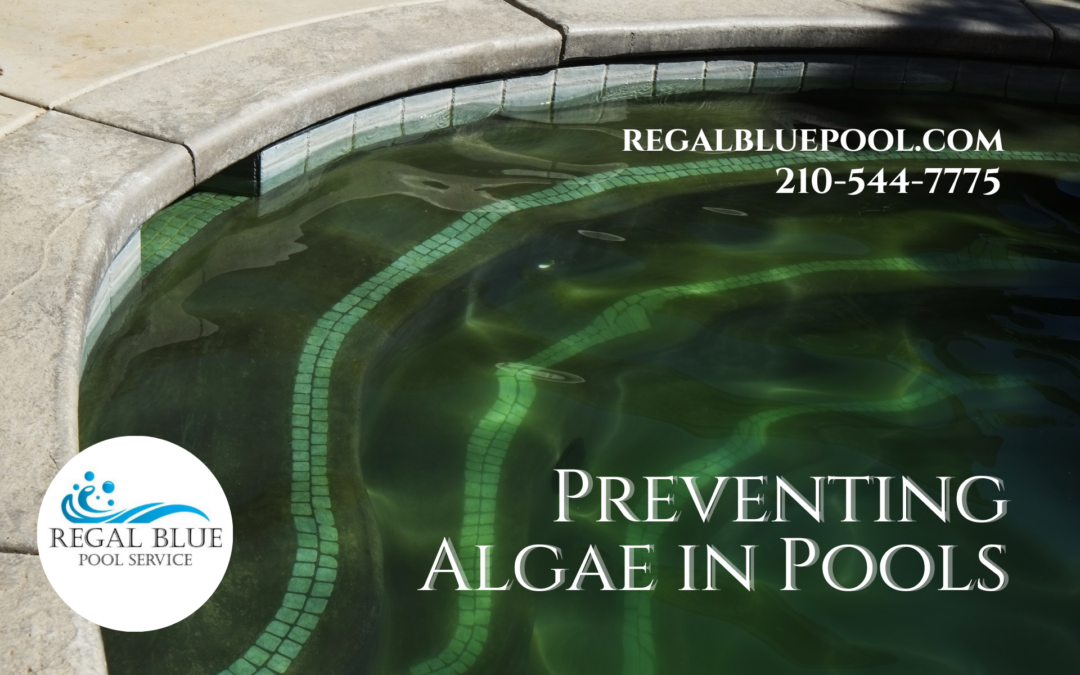
Preventing Algae in Pools
Algae growth in swimming pools is a common issue that can quickly transform a clean, inviting pool into a murky, unappealing body of water. This growth is primarily due to algae’s ability to thrive in warm, stagnant water, which is often found in pools that are not adequately maintained. Algae spores are constantly introduced into the pool through the environment, such as by wind and rain, and can rapidly multiply under the right conditions.
The importance of preventing algae in swimming pools cannot be overstated. Not only does algae make a pool look unsightly, but it can also create slippery surfaces that increase the risk of accidents. Moreover, an algae-infested pool can harbor bacteria and other pathogens, potentially leading to health issues for swimmers. Maintaining a clean and algae-free pool is essential for ensuring a safe and healthy swimming environment, enhancing the enjoyment and safety of all pool users.
Understanding Algae
What is Algae? Algae are simple, non-flowering, and typically aquatic organisms that are not closely related to the more familiar terrestrial plants. These organisms can range from single-celled varieties to large seaweeds, but the types typically found in swimming pools are usually microscopic and free-floating. Algae utilize photosynthesis to produce their food, thriving in environments with sufficient light, water, and nutrients.
How Do Algae Grow in Pools? In pool environments, algae growth is facilitated by several factors, most notably water that is warm and rich in nutrients. Algae spores are omnipresent in the environment and can enter a pool through the air or by contaminated swimsuits and pool cleaning tools. Once in the water, if conditions are favorable—particularly if the water is warm and rich in nutrients—these spores can bloom into visible colonies.
Factors Contributing to Algae Growth:
- Temperature: Algae growth is temperature-dependent, with warmer water accelerating reproduction. Most pool algae find temperatures between 60°F and 90°F conducive, which are common in many climates during the swimming season.
- Light: Sunlight is a critical factor for algae growth as it provides the energy needed for photosynthesis. Pools exposed to significant sunlight are more prone to algae issues than those shaded or covered.
- Nutrient Availability: Nutrients, particularly phosphates and nitrates, feed algae. These can enter pool water from various sources, including lawn fertilizers, decaying organic matter like leaves and grass, and even some pool chemicals. Well-balanced pool water with minimal nutrients curtails algae growth.
Preventing algae requires understanding and managing these contributing factors. Reducing nutrient levels, controlling water temperature where possible, and limiting light exposure can all help keep algae at bay. By addressing these aspects, pool owners can maintain clearer and healthier swimming conditions.
Regular Maintenance Routines
- Daily and Weekly Checks
- Skimming and brushing: Importance of daily removal of debris and weekly brushing of pool walls and floor.
- Vacuuming: How regular vacuuming helps prevent algae by removing potential food sources.
- Filter Maintenance
- Types of pool filters (sand, cartridge, and diatomaceous earth) and their role in algae prevention.
- Best practices for cleaning and replacing filters to maintain optimal performance.

Proper Chemical Balance
Maintaining a clean and healthy pool requires consistent care and vigilance. Daily and weekly checks are crucial in preventing algae and keeping the pool environment pristine. Each day, skimming the surface of the pool helps remove debris such as leaves, insects, and other floating materials that can serve as food sources for algae. Weekly, it’s essential to brush the walls and floor of the pool to dislodge algae spores before they take hold and begin to grow. This routine not only keeps the pool looking inviting but also prevents the buildup of algae.
In addition to surface cleaning, regular vacuuming of the pool is necessary. By removing debris from the bottom and corners of the pool, vacuuming eliminates potential breeding grounds for algae, thereby keeping the water clear and clean. This task should be done at least once a week or more frequently depending on the pool’s usage and environmental factors like surrounding trees and weather conditions.
Filter maintenance is another critical aspect of pool care. The three main types of pool filters—sand, cartridge, and diatomaceous earth—each play a vital role in trapping debris and contaminants. Proper maintenance of these filters is key to preventing algae growth, as a clean filter improves water circulation and filtration, removing even the smallest particles that can feed algae. It’s important to clean and replace pool filters regularly according to the manufacturer’s recommendations to ensure optimal performance.

Advanced Prevention Techniques
The chemical balance of pool water is pivotal in maintaining a clean swimming environment. Maintaining the correct pH level, typically between 7.2 and 7.8, helps ensure that sanitizers work effectively. An unbalanced pH can render chlorine or bromine less effective, potentially allowing algae to grow. Regular testing and adjusting of the pool’s pH are necessary to keep the water balanced and algae at bay.
Moreover, keeping sanitizer levels adequate is essential to inhibit algae growth. Chlorine and bromine are the most common sanitizers used to keep pool water clean. It’s crucial to regularly check these levels to ensure they are within the effective range for killing algae spores. For those seeking alternatives, mineral systems, which use elements like silver and copper, can also be effective in controlling algae and are worth considering as part of a comprehensive pool maintenance plan.
Lastly, the use of algaecides can be a preventive measure to keep algae from flourishing. These chemicals specifically target algae and can be used as part of a regular maintenance schedule to keep the pool algae-free. When using algaecides, it’s important to follow the manufacturer’s guidelines to ensure they are used safely and effectively. This combined approach of physical cleaning, chemical balance, and periodic use of targeted algaecides helps maintain the pool’s aesthetic appeal and sanitary conditions, ensuring it remains a safe and enjoyable place for everyone.
Troubleshooting Common Issues
Even with diligent pool maintenance, algae can sometimes appear. If you encounter algae despite following best practices, here are some tips to address the issue and identify any underlying problems in your maintenance routine.
Addressing Algae Appearance:
- Shock Treatment: When algae first appear, applying a shock treatment can be an effective method to kill off the bloom. Use a chlorine-based shock for immediate results, ensuring you achieve a high enough chlorine level to combat all the algae.
- Brush and Vacuum: After shocking the pool, thoroughly brush all surfaces where algae have accumulated to loosen it, then vacuum the pool to remove the dead algae and any debris contributing to its growth.
Identifying and Correcting Maintenance Issues:
- Reevaluate Chemical Levels: Frequent testing of your pool’s water chemistry is essential. If algae persist, double-check your pH and chlorine levels as these are often the culprits when out of balance. Ensure your pH is within the 7.2 to 7.8 range and chlorine levels are consistently maintained.
- Inspect Filtration System: A faulty or inadequate filtration system could be allowing algae to thrive. Check your filter for any signs of malfunction or inefficiency, and clean or replace it if necessary. Ensure the filter runs long enough each day to turn over the water volume at least once.
- Consider Circulation Patterns: Poor water circulation can lead to dead spots where algae grow. Assess the positioning of your return jets to ensure optimal water movement throughout the pool. Aim jets in varying directions to eliminate stagnant areas.
If algae continue to be a problem despite these measures, it may be helpful to consult with a professional pool service. They can offer a more detailed analysis of your pool’s condition and recommend advanced solutions to keep your pool clear and healthy.
Conclusion
Maintaining a swimming pool requires consistent care and attention to detail. Throughout this discussion, we’ve highlighted the importance of regular maintenance routines, proper chemical balance, and effective troubleshooting to prevent and manage algae growth. Ensuring that your pool’s pH and sanitizer levels are within the optimal range, and keeping the filtration system in good working order are crucial steps to enjoying a clean, algae-free pool.
Establishing a regular pool care schedule is essential not only for aesthetic enjoyment but also for the health and safety of all pool users. Routine checks and balances will help in maintaining the pristine condition of your pool and in preventing the common pitfalls that lead to algae outbreaks.
If you find maintaining your pool’s balance challenging or if algae problems persist despite your best efforts, it might be time to consult with professional pool services. Professionals can provide personalized advice and assistance tailored to your pool’s specific conditions and requirements. Don’t hesitate to reach out to your local pool maintenance experts to ensure your pool remains a refreshing and inviting oasis all year round.
More From This Category

Throwing the Perfect Fall Pool Party in San Antonio
Fall in San Antonio is the perfect time for an outdoor gathering, and what better way to celebrate the season than with a pool party? With temperatures still comfortably warm but the crisp air adding a refreshing touch, a fall pool party is a fantastic way to make the...

Throwing the Perfect Fall Pool Party in San Antonio
Fall in San Antonio is the perfect time for an outdoor gathering, and what better way to celebrate the season than with a pool party? With temperatures still comfortably warm but the crisp air adding a refreshing touch, a fall pool party is a fantastic way to make the...

Throwing the Perfect Fall Pool Party in San Antonio
Fall in San Antonio is the perfect time for an outdoor gathering, and what better way to celebrate the season than with a pool party? With temperatures still comfortably warm but the crisp air adding a refreshing touch, a fall pool party is a fantastic way to make the...


0 Comments